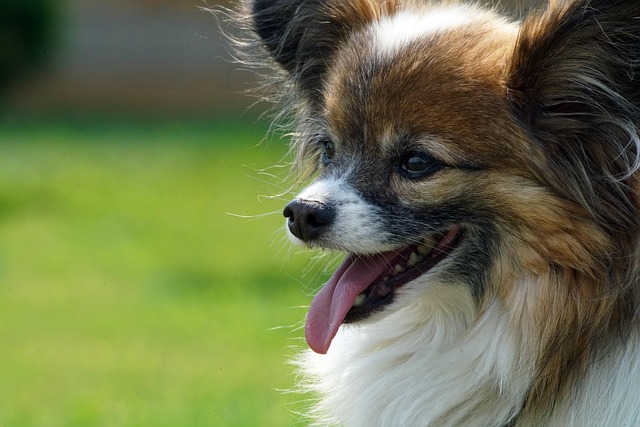
What is glaucoma in a dog?
You might notice your dog squinting more at mealtime or avoiding bright sunlight—these small changes could be early signs of a serious eye condition.
Seeing your Chow Chow shake their head, scratch at their ears, or notice a thick, yellowish discharge oozing from those fluffy ear folds can be terrifying. As a loving owner, your first instinct is to fix it—fast. But ear discharge with pus rarely resolves on its own, especially in a breed with such uniquely structured ears. Let’s explore why this happens, what it means for your pup, and how to respond with compassion and clear-headed care.
The Critical First Step: Contact Your Vet Immediately
Pus in the ears—medically called otitis—is never a minor issue, especially in Chow Chows. Their small, folded ears create a warm, moist environment perfect for bacteria, yeast, or parasites to thrive, and pus indicates your dog’s immune system is fighting an active infection. Do not try to "treat" this at home with over-the-counter meds or natural remedies. In most countries, providing proper veterinary care for infections is both a legal responsibility and the kindest choice for your pet. Your vet will perform a thorough exam, possibly taking a sample of the pus to identify the exact cause and prescribe targeted treatment.
Common Causes of Pus in Chow Chow Ears
Bacterial InfectionsThese are among the most common culprits, often triggered by moisture trapped in the ear folds. Chow Chows with untrimmed ear fur or infrequent cleanings are more prone, as dirt and wax buildup create a breeding ground for bacteria. Symptoms include foul odor, redness, and thick, yellow-green pus. Left untreated, bacteria can spread to the inner ear, causing pain, hearing loss, or even balance issues.
Yeast Infections east thrives in warm, damp environments—exactly what a Chow Chow’s ear folds provide. A yeast infection often causes a dark, sticky discharge with a strong, musty smell, along with intense itching that makes your pup rub their ears against the floor or furniture. Yeast overgrowth is sometimes linked to allergies , as chronic itching damages the ear’s protective barrier, allowing yeast to take over.
 Ear MitesThese tiny parasites are highly contagious and cause extreme irritation. Mite infestations lead to dark, crumbly discharge and relentless scratching, which can break the skin and introduce bacteria, leading to pus. While more common in puppies, adult Chow Chows can pick up mites from other animals or contaminated environments.
Ear MitesThese tiny parasites are highly contagious and cause extreme irritation. Mite infestations lead to dark, crumbly discharge and relentless scratching, which can break the skin and introduce bacteria, leading to pus. While more common in puppies, adult Chow Chows can pick up mites from other animals or contaminated environments.
Trauma or Foreign ObjectsA sharp piece of grass, a foxtail, or even over-zealous cleaning with cotton swabs can scratch the ear canal, creating an entry point for infection. Chow Chows who love to romp in tall grass are at higher risk. Trauma-related infections often cause bloody discharge alongside pus, and your dog may flinch or yelp when you touch their ears.
Allergies or Autoimmune IssuesChronic allergies can inflame the ears, making them prone to secondary infections. You might notice your Chow Chow rubbing their face or paws along with ear discharge. In rare cases, autoimmune disorders or hormonal imbalances can weaken the immune system, making ears more susceptible to recurring infections.
What Happens If You Delay Treatment?
In the short term, your dog is in pain—ear infections are incredibly uncomfortable, affecting their appetite, sleep, and willingness to interact. Long-term, untreated infections can lead to permanent hearing loss, scarring in the ear canal, or even neurological issues if the infection spreads to the inner ear. In many countries, neglecting a pet’s medical needs can result in fines or legal action, as it’s considered a form of animal cruelty. Responsible ownership means acting quickly when you spot symptoms like pus, odor, or behavioral changes.
How Vets Diagnose and Treat Ear Infections in Chow Chows
Your vet will start with an otoscopic exam to visualize the ear canal and eardrum, checking for tears or foreign bodies. They may take a swab to analyze under a microscope, identifying bacteria, yeast, or mites. Treatment varies by cause:
Bacterial/Fungal Infections: Prescription ear drops or ointments. In severe cases, oral antibiotics might be needed.
Ear Mites: A vet will clean the ears and prescribe antiparasitic medications, often combined with environmental decontamination.
Allergies: Addressing the root cause alongside infection treatment to prevent recurrence.
 Caring for Your Chow Chow During Recovery
Caring for Your Chow Chow During Recovery
While your vet handles the medical side, you can provide comfort at home:
Gentle Cleaning: Use only vet-approved ear cleaners to remove debris, following their step-by-step guidance to avoid irritating the canal.
Elevated Comfort: Create a quiet space with soft bedding, and avoid activities that might shake their head excessively.
Medication Compliance: Administer all meds exactly as prescribed, even if symptoms improve quickly—stopping early can lead to resistant infections.
Preventing Future Ear Issues in Chow Chows
Regular maintenance is key for this breed:
Weekly Ear Checks: Gently lift the ear flaps to look for redness, odor, or excess wax—catching issues early means simpler treatment.
Hygiene Routine: Trim fur around the ear base to improve airflow, and dry ears thoroughly after baths using a vet-approved drying powder.
Allergy Management: Work with your vet to identify triggers and adjust diet/environment to reduce inflammation.
Trust Your Instincts—Your Pup Needs You
Finding pus in your Chow Chow’s ears is scary, but remember: quick action is your superpower. By prioritizing a vet visit over home remedies, you’re ensuring your dog gets the precise care they need, while also being a responsible pet owner in line with animal welfare standards. Your Chow Chow’s ears may be fluffy and sweet, but they’re also delicate—treat them with the same urgency and tenderness you’d want for yourself. With professional help and lots of love, those ears will be itch-free and happy again soon.

You might notice your dog squinting more at mealtime or avoiding bright sunlight—these small changes could be early signs of a serious eye condition.

Let’s set the scene: It’s a sweltering Phoenix afternoon—105°F outside—and you rushed your 2-year-old Lab mix, Cooper, on a quick walk to “get it over with.”

Let’s get real: You’re in your Miami apartment, watching your 3-year-old Corgi, Loki, struggle to climb the stairs to your second-floor unit.

Many dog owners brush off occasional scratching as just “dog behavior,” but persistent itching often signals something more—like a food allergy.

You might first notice your dog scratching more than usual—chewing at their paws until the fur looks thin, or rubbing their face against the couch nonstop.

Let’s be real: You’re standing in your Chicago apartment, watching your 3-year-old Beagle, Max, huff and puff just to climb onto the couch.